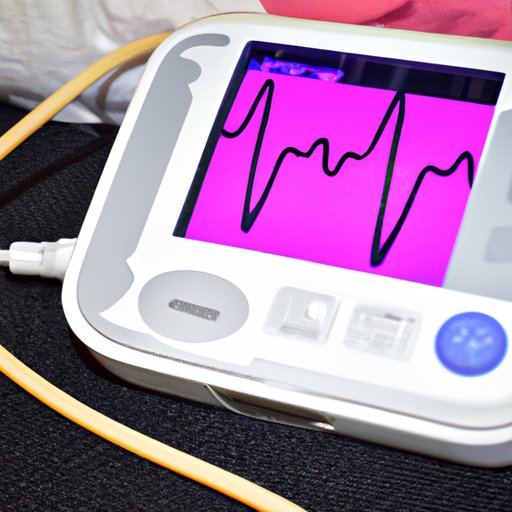
Introduction
Plasma donation is a crucial factor in saving lives through medical procedures. Understanding how much plasma you can donate is essential to ensure your health and safety, and to maximize the benefits of your donations. In this article, we will explore the science behind plasma donation, safety limits, benefits of donating plasma, FAQs, and compare plasma donation to blood donation. We hope to increase awareness and encourage more people to donate plasma.
The Science Behind Plasma Donation and How Much a Person Can Donate
Plasma is the liquid component of blood that carries several critical substances, including proteins, antibodies, enzymes, hormones, and nutrients. When a person donates plasma, the process is called plasmapheresis, where plasma is separated from the blood through an automated machine that collects plasma and returns the red blood cells and platelets to the donor’s body.
Donating plasma depends on several criteria such as age, weight, health status, and medical history of the donor. The maximum amount of plasma you can donate is about 800 milliliters per session or twice a week, with at least 48 hours in between sessions. However, it varies depending on the donor’s sex, weight, and body fat content.
Various factors can affect plasma donation, such as dehydration, stress, and fatigue. It is vital to be adequately hydrated before donation and get enough rest. Plasma donors must also maintain a healthy diet to ensure that their body is fit for donation.
Safety Limits and Screening Procedures for Plasma Donation
Before donating plasma, you will go through a donor screening process, which is a detailed medical history inquiry about your health and lifestyle. The screening tests help ensure that you are healthy and that your plasma donation is safe for the recipient.
The safety limits for plasma donation are in place to protect you and the recipient from the risks of excessive plasma loss. Plasma donors must weigh at least 110 pounds and have normal blood pressure and protein levels. If your hematocrit or protein levels are low or if your blood pressure is too high, you may not be able to donate plasma for safety reasons.
The side effects of plasma donation can include light-headedness, dehydration, and fatigue, but these side effects are typically mild and temporary. You can also experience minor injuries such as bleeding or bruising from the needle insertion site.
Benefits of Donating Plasma and How Often You Can Donate
Plasma donation is a selfless act that is crucial in saving lives. One donation can be used to treat up to three patients, and plasma is used to treat patients with burns, shock, trauma, and other medical conditions. By donating plasma, you are giving back to the community and potentially saving lives.
The frequency of plasma donation depends on the donor’s status, whether they are first-time donors or regular donors. For new donors, they can donate twice a week, with at least 48 hours in between sessions. Regular donors can donate up to three times a week, depending on their health status, medical history, and weight.
It is crucial to maintain good hydration and nutrition before and after plasma donation. Drinking plenty of water and electrolyte fluids helps replace the lost plasma volume and prevents dehydration. A well-balanced meal, rich in protein and iron, helps replenish the lost nutrients, and this helps the body recover faster.
FAQ’s: Common Questions People Have about Plasma Donation
Many people have questions about plasma donation that need clarification. Some commonly asked questions include:
- Can you donate plasma if you have a tattoo?
- Is plasma donation painful?
- Can you donate plasma while taking medication?
- Can you donate plasma if you have high blood pressure?
- How long does the donation process take?
Donors must have accurate information to make informed decisions about plasma donation. Only a brief listing of FAQ answers has been given here. More detailed information can be given by plasma donation centres in your location.
Personal Stories of Plasma Donors Who Have Reached the Maximum Allowed for Donation
There are many personal stories of plasma donors who have reached the maximum allowed for donation. It is inspiring to see how these donors have contributed to countless lives through their donations. They are also a testimony that plasma donation is safe and beneficial.
At this point, a table of experience reports of plasma donors who have reached the maximum allowed donation limit will be given to readers as testimonies.
Comparing Plasma Donation to Blood Donation and How They Differ in Terms of Frequency and Amount You Can Donate
Plasma donation and blood donation differ in terms of frequency and the amount of collection. Plasma donors can donate up to twice a week, while blood donors have a waiting period of at least 56 days between donations.
A single plasma donation can yield up to 800 milliliters of plasma, while a whole blood donation is about 470 milliliters. Plasma donation is also less taxing on the body than whole blood donation as it replenishes in about 24-48 hours.
There are benefits to donating plasma over blood, such as flexibility in donation frequency, longer shelf life for plasma, and the potential for plasma to aid in treating more medical conditions.
Conclusion
In conclusion, understanding how much plasma you can donate is crucial in ensuring your safety and maximizing the benefits of your donations. Plasma donation can save multiple lives, and it is essential that we encourage more people to donate and spread awareness to the broader community. By donating plasma, you not only make a difference but become a life-giving force.




